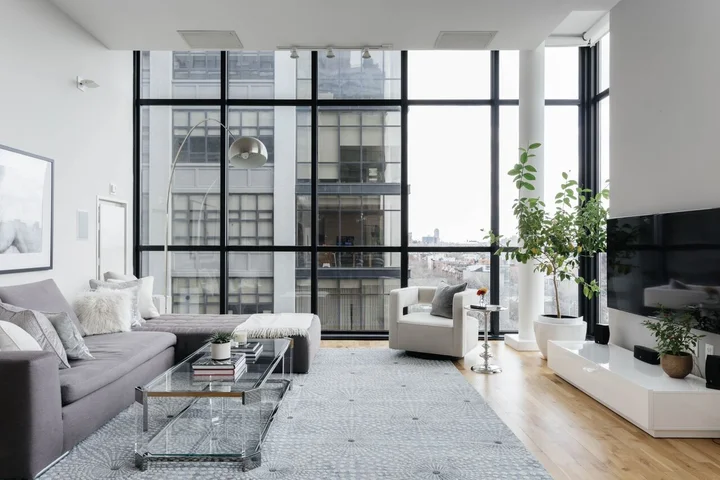When it comes to city living or compact apartments, the biggest challenge is often the size. But smaller square footage doesn’t mean you have to sacrifice style, comfort, or functionality. In fact, designing a small apartment or studio is a unique opportunity to showcase creativity, precision, and taste. With the right approach, even the tiniest space can make a bold and lasting impression. Let’s explore how to transform a modest home into a beautifully efficient retreat.
Embrace Multi-Functional Furniture
Living in a small apartment means every inch counts, and furniture can’t afford to do just one job. A coffee table that doubles as storage, a bed with drawers underneath, or a couch that converts into a guest bed can change the way you interact with your space. These aren’t just practical—they’re stylish and often designed specifically for smaller environments. Multi-functional furniture enables you to live more freely, eliminating clutter and opening up the room.
Think about a dining table that folds away when not in use, or an ottoman that stores blankets and also serves as a footrest. By choosing furniture that adapts to your needs, you create a flexible and dynamic living area. The key is to invest in pieces that blend utility with design.
Optimize Vertical Space
In small apartments, the floor area might be limited, but the walls are full of potential. Elevating your storage can dramatically increase your usable space. Installing floating shelves can keep essentials off countertops, while wall-mounted lighting can free up side tables.
In studio apartments, taking advantage of height can also mean creating loft areas for sleeping or working. Elevated platforms not only add square footage but visually define separate zones within one open space. The more you build upward, the more expansive your home will feel.
Use Light Colors and Reflective Surfaces

Light plays a major role in how we perceive space. Using soft, neutral tones like white, beige, and pale gray can make rooms feel larger and more open. Reflective surfaces such as mirrors and glossy finishes enhance this effect by bouncing light around the room.
Natural light is your best ally, so avoid heavy window treatments that block it out. However, if natural light is limited, a layered lighting approach—using a mix of ceiling lights, lamps, and under-cabinet lighting—can help maintain a bright and airy atmosphere. Combined with a strategic color palette, lighting creates a sense of openness and flow that defies the room’s dimensions.
Define Areas Without Walls
In compact apartments, especially studios, it’s important to create functional zones even without physical barriers. Instead of walls, use visual cues like rugs, curtains, or lighting to define spaces for sleeping, eating, and relaxing. This not only brings order but helps prevent your space from feeling like a single catch-all room.
For example, placing a rug under the dining area or installing a curtain around the bed creates the illusion of distinct rooms. Even the direction of a couch or bookshelf can delineate spaces, giving structure to your layout without making the space feel smaller or boxed-in.
Go Minimalist Without Sacrificing Style
Minimalism isn’t about living with nothing—it’s about living with intention. In a small space, every item must earn its place. By decluttering and selecting only the pieces that serve a function or bring joy, your home becomes more breathable and calm.
That doesn’t mean it has to be boring. A single standout item, such as a bold piece of artwork or a unique light fixture, can inject personality without overwhelming the space. This is where small spaces really shine—when there’s no room for excess, every detail matters more.
Incorporate Smart Storage Solutions

Finding creative ways to store belongings is essential in a small apartment. Hidden compartments in furniture, wall-mounted racks, and vertical cabinets all contribute to keeping the space neat. Think beyond traditional closets—under the bed, behind doors, and even inside stairs can become storage areas.
Custom-built storage, although more costly, can be a game-changer. Tailoring shelves, drawers, and built-ins to your specific space ensures nothing is wasted. A well-organized apartment feels larger and is far easier to maintain.
Use Glass and Transparency to Open Up Rooms
Transparent elements are powerful tools in interior design for small homes. Glass partitions and sliding doors can divide spaces without shutting off light, preserving an open, airy atmosphere. This is especially effective in studios where privacy is needed without losing the spacious feel.
Acrylic or glass furniture adds functionality without visual weight. A clear dining table or see-through chairs allow the eye to travel through the space uninterrupted, making the room appear less crowded and more elegant.
Bring Nature Indoors
Natural elements add warmth and life to any space, especially smaller ones that may lack outdoor access. Even a single plant can change the mood of a room. In compact apartments, small potted plants, hanging greenery, or a mini herb garden in the kitchen bring nature inside without occupying valuable floor space.
Biophilic design—the integration of natural materials and organic textures—is also a great way to enrich small interiors. Wood accents, woven textiles, and botanical prints offer a connection to the outdoors, fostering comfort and well-being.
Final Touches: Decor That Makes an Impact
The beauty of a small space lies in the details. Choosing the right textiles, art, and accents can elevate your apartment from ordinary to inspiring. A well-placed mirror, a vibrant throw, or a set of coordinated cushions can transform the room’s energy.
Focus on flexibility—rotate decor items with the seasons or your mood. This approach keeps the space fresh and adaptable without requiring major changes or expenses. Small decorative updates can have a surprisingly large effect when done thoughtfully.
Living in a small apartment or studio doesn’t mean living small—it means living smart. With intentional design, multifunctional furniture, clever storage, and creative visual zoning, compact spaces can feel expansive, elegant, and uniquely yours. Whether you’re starting fresh or refreshing your current space, remember: every square inch has the potential to make a big impact.
